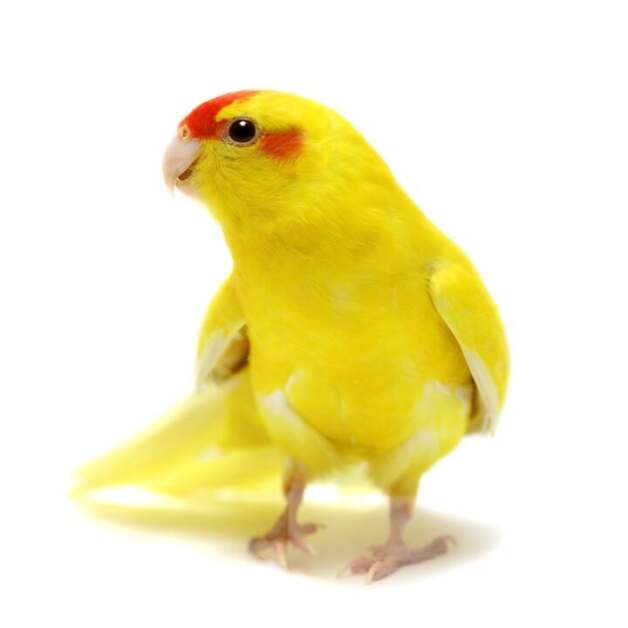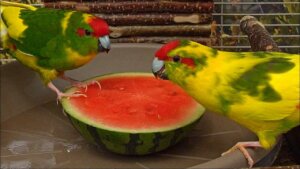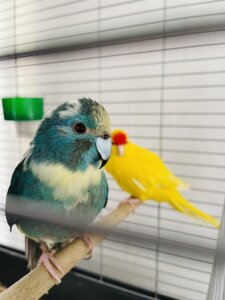How Long Do Kakarikis Live: Discover Their Lifespan Secrets
Kakarikis, known for their vibrant colors and lively nature, make great pets. But how long do these charming birds live?
Kakarikis, a type of parrot native to New Zealand, typically live for 10 to 15 years. This lifespan can vary based on factors like diet, environment, and health care. Understanding their life expectancy helps you provide better care and form a lasting bond.
Known for their playful personalities, Kakarikis require attention and proper care. With the right environment and nutrition, these birds can thrive and bring joy to their owners for many years. In this post, we will explore factors that affect their lifespan and how to ensure your Kakariki lives a long, happy life. Ready to dive in? Let’s explore!
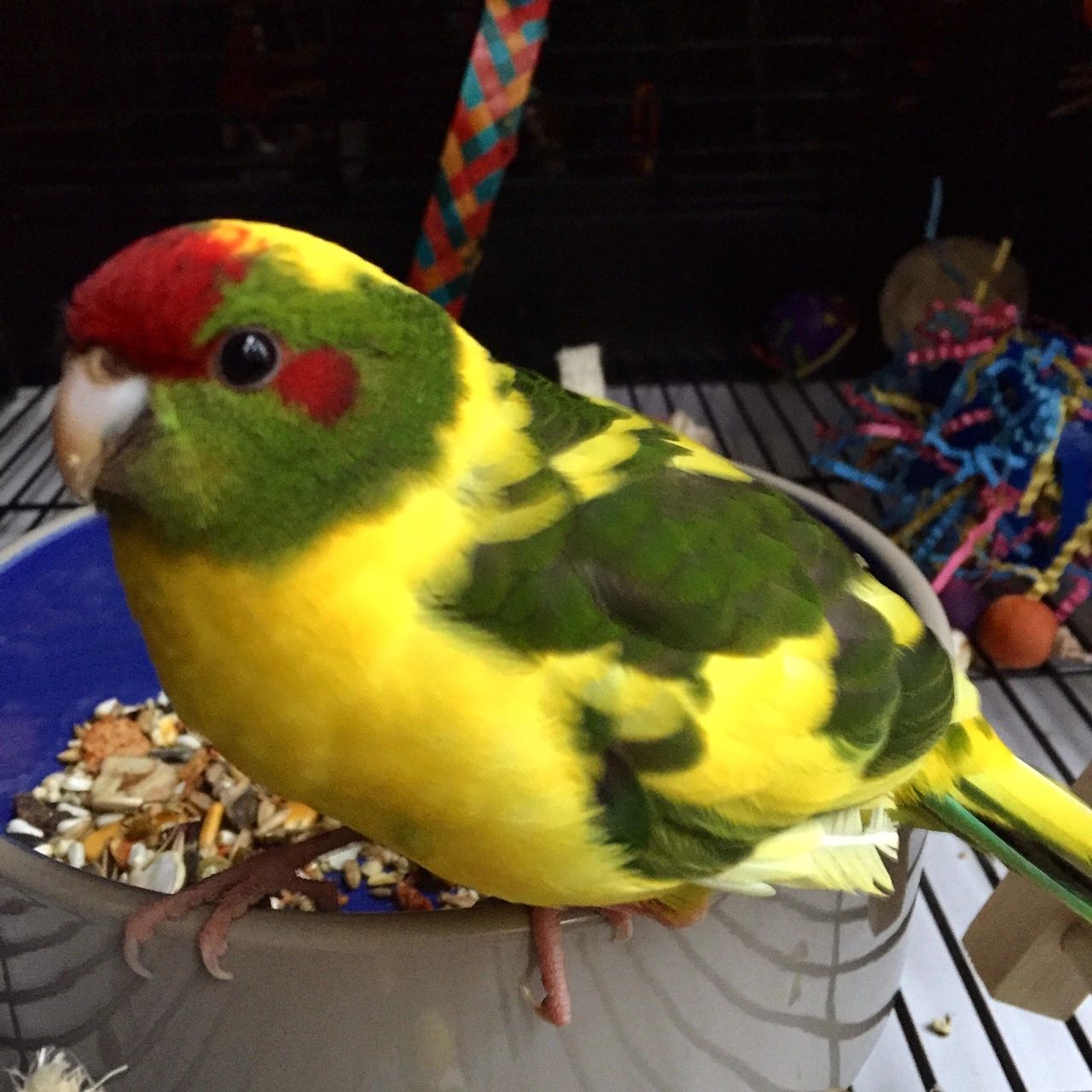
Credit: featherbelleaviary.com
Introduction To Kakarikis
Kakarikis are vibrant, small parrots known for their playful nature. These birds make great pets due to their friendly and curious behavior. Understanding their lifespan and how to care for them is essential for any bird lover.
Origin And Habitat
Kakarikis, also known as New Zealand parakeets, originate from New Zealand. They inhabit forests, shrublands, and coastal areas. These birds adapt well to different environments, making them resilient and versatile.
Physical Characteristics
Kakarikis are small, with an average length of 28 cm. They have bright green feathers, with some species showing red or yellow markings on their heads. Their strong beaks and agile feet make them excellent climbers.
| Characteristic | Details |
|---|---|
| Size | 28 cm |
| Color | Green, with red or yellow markings |
| Beak | Strong, curved |
| Feet | Agile, perfect for climbing |
Average Lifespan
Understanding the average lifespan of Kakarikis is essential for potential owners. These small parrots, native to New Zealand, are known for their playful nature. Their lifespan can vary based on several factors.
Lifespan In The Wild
In the wild, Kakarikis face many challenges. Predators, disease, and food scarcity can impact their lifespan. Typically, wild Kakarikis live for about 6 to 8 years. Their survival largely depends on their environment and ability to avoid threats.
Lifespan In Captivity
Kakarikis in captivity often live longer than their wild counterparts. With proper care, they can live up to 15 years or more. Here are some factors that influence their lifespan in captivity:
- Diet: A balanced diet including fresh fruits, vegetables, and seeds.
- Healthcare: Regular vet check-ups to prevent illnesses.
- Exercise: Ample space and toys to keep them active.
- Environment: A clean and safe living space.
Providing a nurturing environment can significantly extend their lifespan. Owners should ensure their Kakarikis receive the best care possible.
Factors Influencing Lifespan
Understanding the factors that influence the lifespan of Kakarikis can help ensure they live long, healthy lives. These factors include diet, nutrition, environment, and housing. Proper care can significantly extend their lifespan.
Diet And Nutrition
Diet plays a crucial role in the lifespan of Kakarikis. A balanced diet provides essential nutrients. Fresh fruits and vegetables are vital. Seeds and pellets should be part of their diet. Avoid giving them fatty or sugary foods. Clean, fresh water is also important. Regularly check their diet to ensure it meets their nutritional needs.
Environment And Housing
Their environment and housing also affect their lifespan. Kakarikis need spacious cages. This allows them to move and exercise. Ensure the cage is safe and clean. Provide perches and toys for mental stimulation. The cage should be in a quiet, draft-free area. Keep the temperature stable and comfortable. Proper lighting is also important for their well-being.
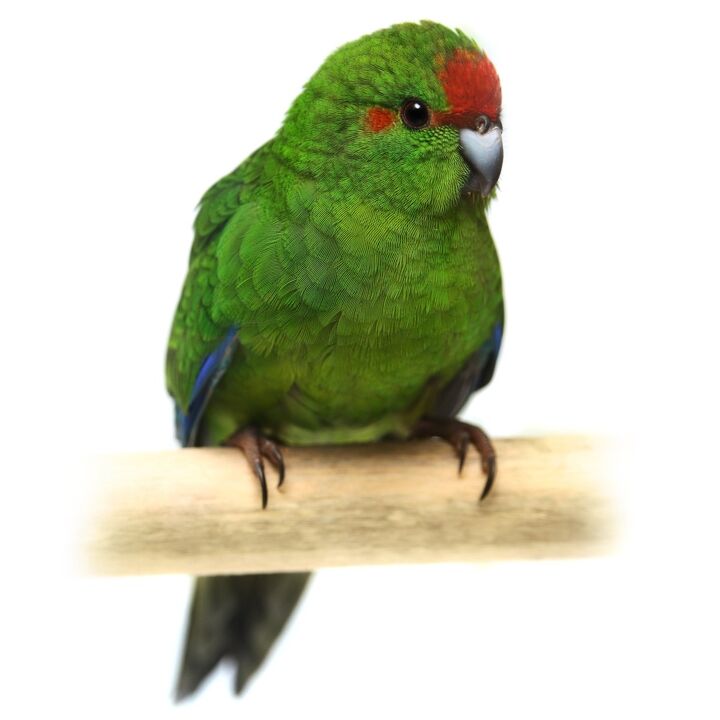
Credit: www.petguide.com
Common Health Issues
Kakarikis, those charming and lively parrots, are beloved for their playful nature. Yet, like any pet, they can face health issues. Knowing common ailments helps in ensuring their long and happy lives.
Signs Of Illness
Watch for changes in behavior. A usually active bird becoming lethargic is a red flag. Look out for changes in appetite. If your Kakariki stops eating, it might be sick. Observe their droppings. Unusual color or consistency can signal health issues. Breathing problems, like wheezing, are also concerning signs. Feather plucking and ruffled feathers are additional indicators of stress or illness.
Preventive Measures
Provide a balanced diet. Fresh fruits and vegetables are crucial. Ensure clean water is always available. Regularly clean their cage to prevent infections. Offer a variety of toys and activities to keep them mentally stimulated. Schedule regular vet check-ups to catch any issues early. Maintain a stress-free environment for your Kakariki to thrive. Pay attention to their needs and respond promptly to any signs of distress.
Enhancing Longevity
Ensuring your Kakariki lives a long, healthy life requires dedication. Focusing on their diet and exercise routines can make a significant difference. Below, find key tips to enhance the longevity of your beloved feathered friend.
Proper Diet
A balanced diet is crucial for Kakarikis. Feed them a mix of seeds, fruits, and vegetables. Fresh fruits like apples, grapes, and berries are excellent choices. Ensure the fruits are free of seeds and pits.
Include vegetables like carrots, spinach, and broccoli. These provide essential vitamins and minerals. Avoid feeding them avocado, as it is toxic to birds.
Pellets can also be part of their diet. They offer balanced nutrition and prevent selective eating. Remember to provide fresh water daily and clean their dishes regularly.
Regular Exercise
Exercise is essential for Kakarikis. These birds are active and need space to move. Allow them to fly outside their cage for at least an hour daily.
Provide toys and perches inside the cage. Toys like swings, ropes, and ladders keep them engaged and active. Change the toys regularly to prevent boredom.
Create a stimulating environment. Place the cage in a lively area where they can see and hear household activities. This keeps them mentally stimulated and happy.
By following these tips, you can help ensure your Kakariki lives a long and fulfilling life.

Credit: en.wikipedia.org
Breeding And Lifespan
Understanding the breeding and lifespan of Kakarikis is essential for any bird enthusiast. Kakarikis, known for their vibrant colors and playful nature, have specific needs during their breeding period. These needs directly impact their overall lifespan and well-being.
Impact Of Breeding
Breeding can significantly affect the lifespan of Kakarikis. During breeding, Kakarikis require more energy and nutrients. The breeding period can be stressful, especially for females. This stress can shorten their lifespan if not managed properly.
On average, a Kakariki’s lifespan ranges from 10 to 15 years. However, breeding can sometimes reduce this lifespan. Providing proper care and nutrition during this time is crucial to maintain their health.
Care For Breeding Pairs
Caring for breeding pairs involves ensuring they have a safe and comfortable environment. Here are some key points:
- Provide a spacious cage with plenty of room to move.
- Offer a variety of perches and nesting materials.
- Ensure a balanced diet rich in vitamins and minerals.
- Keep the environment clean and free of stressors.
Additionally, monitoring the health of both birds is vital. Regular check-ups with a vet can help catch any health issues early. Supplement their diet with calcium and other nutrients to support egg-laying females.
Here is a simple table summarizing the care for breeding pairs:
| Care Aspect | Details |
|---|---|
| Spacious Cage | Ample room to move and explore |
| Nesting Materials | Provide a variety of materials |
| Balanced Diet | Rich in vitamins and minerals |
| Clean Environment | Free of stressors and debris |
| Regular Vet Check-ups | Monitor health and catch issues early |
Proper care during breeding ensures that Kakarikis remain healthy and live their full lifespan. By understanding their needs and providing the right environment, you can help your Kakarikis thrive.
Role Of Social Interaction
Understanding the role of social interaction is crucial for the well-being of Kakarikis. These active and playful birds thrive on social engagement. Their lifespan can be influenced by their social environment. Providing them with companionship and human interaction can significantly impact their quality of life.
Importance Of Companionship
Kakarikis are social birds by nature. They enjoy the company of other birds. Having a companion can prevent loneliness and boredom. A lonely Kakariki may become stressed and unhealthy. Providing a bird friend can keep them happy and active. It also encourages natural behaviors like grooming and playing.
Human Interaction
Kakarikis also benefit from regular human interaction. Engaging with your Kakariki can build trust and companionship. Talk to them, play with them, and offer treats. This interaction keeps them mentally stimulated. It also strengthens the bond between you and your bird. A well-socialized Kakariki is more likely to live a longer, happier life.
Veterinary Care
Ensuring your Kakariki lives a long and healthy life involves proper veterinary care. Regular visits to a vet can help detect potential health issues early. Early treatment can significantly improve your bird’s lifespan and quality of life. Below are key aspects of veterinary care for your Kakariki.
Routine Checkups
Routine checkups are crucial for maintaining your Kakariki’s health. During these visits, the vet will perform a physical examination. They will check for signs of illness, weight changes, and feather quality.
Routine tests may include:
- Blood tests
- Fecal exams
- Beak and nail trimming
Regular checkups can help prevent serious health issues. Aim for at least one checkup per year.
Emergency Care
Knowing when to seek emergency care is vital. Immediate veterinary attention can save your Kakariki’s life. Some signs that require urgent care include:
- Sudden weight loss
- Labored breathing
- Unusual droppings
- Inability to perch
Keep the contact details of an avian vet handy. Quick action can make all the difference.
Proper veterinary care is essential for your Kakariki’s well-being. Regular checkups and knowing when to seek emergency care can help your bird live a long and healthy life.
Frequently Asked Questions
How Long Do Kakarikis Typically Live?
Kakarikis typically live for around 10 to 15 years. With proper care and a healthy diet, they can even live longer.
What Affects Kakarikis’ Lifespan?
Factors affecting their lifespan include diet, exercise, and environment. Regular veterinary check-ups also play a significant role in their longevity.
Do Kakarikis Live Longer In Captivity?
Yes, Kakarikis often live longer in captivity. Controlled diet, environment, and regular health check-ups contribute to their extended lifespan.
How Can I Extend My Kakariki’s Life?
To extend your Kakariki’s life, provide a balanced diet, regular exercise, and a stress-free environment. Regular vet visits are also crucial.
Conclusion
Kakarikis can live up to 15 years with proper care. Their bright personalities bring joy. Ensure a balanced diet and regular vet visits. Clean their cages often. Provide toys and interaction to keep them happy. By meeting their needs, you can enjoy many years with your feathered friend.
Remember, a healthy Kakariki is a happy Kakariki.
Hello Dear, I'm Poli Kolymnia, owner of many birds (including budgies).
With a deep passion for these feathered companions, I'm here to share my expertise and extensive knowledge on birds care.
My articles cover essential topics like diet, housing, care, and health, providing practical tips to help you create a happy and thriving environment for your birds.

